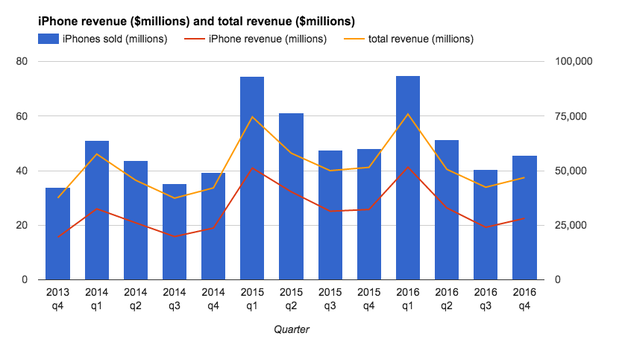Amazon Route 53 Now Supports DNS Queries over IPv6 Networks
Beginning today, Amazon Route 53 starts rolling out support for DNS queries over Internet Protocol Version 6 (IPv6).
Quelle: aws.amazon.com
Beginning today, Amazon Route 53 starts rolling out support for DNS queries over Internet Protocol Version 6 (IPv6).
Quelle: aws.amazon.com
Amazon EC2 instances are now available in more regions:
R3 (r3.large, r3.xlarge, r3.2xlarge) in South America (Sao Paulo)
D2 in China (Beijing)
To learn more about these instance types, visit the Amazon EC2 Instance Types page, the Amazon EC2 User Guide’s section on Instance Types, or the Amazon EC2 Pricing page.
Quelle: aws.amazon.com
Today, AWS Marketplace released Self-Service Listings, a new, web-based interface that lets AWS Marketplace software vendors manage their product listings within the AWS Marketplace Management Portal (AMMP). Starting today, software vendors that wish to list their products for sale on AWS Marketplace can log in to AMMP to view their existing product listings, create a new free listing, create a new Bring-Your-Own-License (BYOL) listing, or track the status of their submitted listing requests. Self-Service Listings offers workflow and collaboration tools that make AWS Marketplace product listings easier to track and manage; vendors can use the new portal to save listings in progress, collaborate internally on product listing creation, view their request history, and more.
Quelle: aws.amazon.com
Apple meldet erneut weniger Gewinn, ist aber das profitabelste US-Unternehmen. Die Konzernführung redet alle Probleme weiter schön, und keiner nimmt das mehr ernst. (Apple, iPhone)
Quelle: Golem

Josh Edelson / AFP / Getty Images
Apple's iPhone sales fell again in the company&039;s most recent quarter, marking the third consecutive period of quarterly decline for the company&039;s most important product. The company&039;s sales of iPads and Macs also both fell.
Those sales have fallen before, but there was also a first in Tuesday&039;s earnings statement: Apple&039;s annual revenue fell for the first time since 2001.
Apple sold 45.5 million iPhones in the three months from July to September, slightly above what analysts polled by Bloomberg expected. The period included about two weeks of sales of the iPhone 7, which may have been boosted by the disaster surrounding the recall of Samsung&039;s explosion-prone Galaxy Note 7.
Apple shares are up about 12% this year, while the broader Nasdaq Composite Index, which includes many technology companies, is up just over 5%. In after-hours trading, the company&039;s stock fell slightly following the release of the results.

Apple/BuzzFeed
With iPhone sales falling, Apple steered investors toward the growing money it makes from services like iCloud, which users subscribe to and pay monthly fees for. Wall Street tends to value these kind of recurring revenue streams, and Apple said its services unit pulled in $6.3 billion in revenue for the quarter, up 24% from a year ago.
Hardware sales fell across the board: iPads were down 6%, Mac computers were down 14% and the company&039;s “other products” — a group that includes the Apple Watch and Beats headphones — fell 22%.
Regardless of falling iPhone sales, Apple remains insanely profitable — it made $9 billion in the last three months — about $100 million in profits every day — which was slightly more Wall Street analysts expected. But even this was still short of the $11 billion it earned in the same period last year.
The company said revenue would start picking up again in the final three months of 2016 — the holiday shopping season is always an Apple sales bonanza. It forecast revenue of $76 to $78 billion, which even at the low end would be above the $75.9 billion in pulled in last year.
“We’re thrilled with the customer response to iPhone 7, iPhone 7 Plus and Apple Watch Series 2, as well as the incredible momentum of our Services business, where revenue grew 24 percent to set another all-time record,” Apple chief executive Tim Cook said in a statement.
Quelle: <a href="Apple&039;s Annual Sales Have Fallen For The First Time Since 2001“>BuzzFeed
The concept of “outthink” is sweeping through numerous industries as companies and individuals uncover new ways to transform their businesses using social, mobile, cloud, Internet of Things (IoT) and cognitive technologies.
To make this strategy a success, outthink must come alive to fuel innovation. This new approach to technology must be thoughtfully applied to a company’s daily processes, enabling real transformation and driving unprecedented value with the goal of vastly improving customer experiences and lives.
An example of a simple, IBM Cloud Platform-based application designed to help insurance claims adjusters assess hail damage for faster, safer and more accurate claims processing at lower cost.
For example, weather-related damages have been in the news recently. In the aftermath of a natural disaster, service demands for insurance providers peak, which can become overwhelming as consumers and businesses seek help and support.
To better manage these spikes in demand, some insurance companies are experimenting with drones and other unmanned aerial vehicles (UAVs) for risk prevention and damage assessment after a storm. These programs are expected to save time and money for the business by streamlining claims processing while improving their ability to respond quickly to customer needs.
However, to date, the return on investment (ROI) of these initiatives has not panned out. The time and cost savings of using drones have been overshadowed by the investment it takes to deploy drones and train agents to pilot them. The expected ROI of drones can be realized faster if they are accompanied with a digital transformation of the entire claims processing processes.
Thinking outside the box, insurance industry service providers may build applications on the IBM cloud platform to help accelerate this transformation. With services like IBM Watson Visual Recognition, IBM Watson IoT, Watson Analytics and IBM Cloud Object Storage, drone applications hosted on the IBM Cloud platform can not only help reduce risk but also improve the speed and accuracy of loss assessment. These improvements help boost efficiency in end-to-end claims processing and improve the lives of citizens impacted by a disaster.
With such cloud-hosted applications, insurers can quickly deploy video-equipped drones to assess damage. Video images from the site are uploaded to IBM Cloud Object Storage and dispersed in multiple regions for protection and availability. These images can be processed quickly by powerful, bare metal servers in IBM Cloud, helping insurers promptly assess the most affected areas and respond to a high volume of requests in a timely manner.
With innovative platform-as-a-service (PaaS) solutions that help empower recovery through safety, accuracy and efficiency, insurance providers can accelerate ROI and make “outthink the status quo” more than a slogan. It’s a philosophy that empowers them to reimagine their processes and boost their effectiveness in helping their customers recover after a storm or other natural disaster.
IBM will demonstrate a prototype of one such PaaS application at World of Watson in Las Vegas this week. See for yourself at World of Watson.
Learn more about IBM Cloud Object Storage.
A version of this post appeared on the IBM Bluemix blog.
The post “Outthink” comes alive in insurance industry drones application appeared first on #Cloud computing news.
Quelle: Thoughts on Cloud
Der US-Provider AT&T hat eine eigene Software geschrieben, um für US-Ermittler und gegen Bezahlung die immensen Datenmengen über die eigenen Kunden durchsuchen zu können. Das sollte aber möglichst geheim bleiben.
Quelle: Heise Tech News
Die Algorithmen der großen Internetplattformen sollen transparenter werden, künstliche Intelligenz verändert den klassischen Journalismus – das sind nur zwei Themen der Medientage in München.
Quelle: Heise Tech News
I'm excited to announce that Chain is LIVE on Azure. Microsoft is a host sponsor of the Chain testnet along with the Initiative for Cryptocurrencies and Contracts (IC3), a collaboration of Cornell University, Cornell Tech, UC Berkeley, University of Illinois at Urbana-Champaign, and the Technion.
For the first time, developers can install Chain Core (Chain’s distributed ledger) in Azure or locally to start or join a blockchain network, build financial applications, and access in-depth technical documentation and tutorials. Through this partnership you have the option to run your own prototypes on the testnet or create your own private network on Azure, all with a single click.
Adding Chain as a first class citizen on Azure demonstrates Project Bletchley&039;s open blockchain approach aimed at providing enterprise services through a Blockchain Fabric allowing choice in platform for building out next generation solutions on distributed ledger technology.
We are proud to welcome Chain and are excited about future partners releasing into the marketplace in the near future.
Quelle: Azure
Amazon WorkMail now supports interoperability with Microsoft Exchange Server 2010 and 2013. Interoperability allows you to minimize disruption to your users as you migrate mailboxes to Amazon WorkMail, or use Amazon WorkMail for a subset of your corporate mailboxes. With interoperability, you can set up rich co-existence between Amazon WorkMail and Microsoft Exchange Server, which allows you to use the same corporate domain for mailboxes across both environments, and allows your users to seamlessly schedule meetings with bi-directional sharing of calendar free-busy information.
Quelle: aws.amazon.com